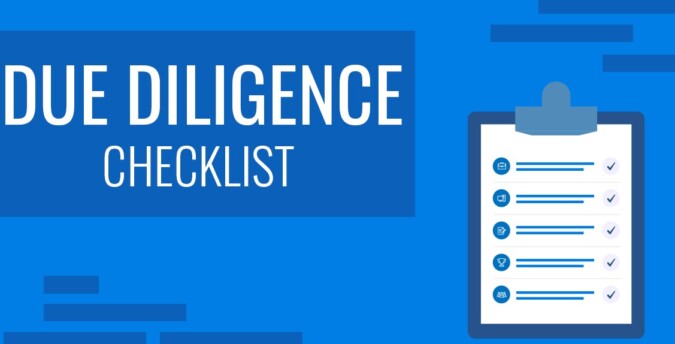Buying an existing business is faster than building one from scratch, but it comes with a new set of risks and decisions. In 2025, the stakes are higher, and so are the opportunities. Investors need to act smarter, ask sharper questions, and spot red flags earlier. Timing matters. So does the structure of the deal. You don’t just need capital—you need clarity.
Let’s break down everything you must check before signing the dotted line.
Key Highlights
- The market in 2025 favors buyers with strategic plans and cash in hand.
- Not all profitable businesses are worth the asking price.
- Valuation must match verified performance, not inflated projections.
- Deal structure can either save you millions or bury you in risk.
- Cultural fit, customer loyalty, and owner transition are deal makers or breakers.
- Always use due diligence as a power tool—not a formality
Why 2025 Is a Unique Year for Acquisitions
The business-for-sale landscape in 2025 looks different. Retiring business owners are finally ready to hand over the reins. Baby boomer-owned companies flood the market, especially in sectors like HVAC, plumbing, trucking, and digital services. These businesses are proven. They bring cash flow, teams, and processes. But not all are equal.
Some are tech-weak. Others have hidden debt. Many lack succession plans. That creates opportunity—if you’re ready to take over fast, fix operational holes, and grow with purpose.
Buyers in 2025 benefit from:
- Lower interest rates compared to the last two years.
- High demand for owner-financed deals.
- A saturated market of sellers looking for successors, not just cash buyers.
Still, that doesn’t mean you should rush.
Profits Don’t Mean Stability
One of the most common mistakes? Equating profit with long-term success. A business can look good on paper and still collapse after the handover. That’s because profit numbers don’t show:
- Owner dependencies
- Weak client contracts
- Burned-out staff waiting to quit
- Legacy tech that breaks under scale
Ask how the profit is created. Does it depend on one client? One platform? One skill the owner has but you don’t?
In 2025, software companies, service providers, and small agencies tend to look attractive because of their margins. But unless you understand the key drivers, you’re not buying a business—you’re buying a liability.
The Valuation Trap

Many sellers want 3x–5x multiples of EBITDA. But the math often doesn’t add up.
Ask yourself:
- Is the EBITDA adjusted honestly?
- Were one-time expenses excluded to inflate numbers?
- Are projected sales realistic, or just guesses?
Valuation must reflect market reality, not seller dreams. A $1M company might only be worth $600K if the systems are outdated and customer churn is high.
A solid due diligence process will expose inflated numbers, unpaid taxes, or legal risks hidden in the books.
Deal Structure Is Where the Game Is Won
Price matters, but deal structure matters more. Paying a higher price with low risk can be smarter than paying less with all the risk.
2025 buyers often lean on these methods:
- Seller Financing: Pay a portion upfront, then the rest over time. Aligns the seller’s interest in your success.
- Earnouts: Tie part of the payment to future performance. Works well if the seller promises big growth.
- Equity Retention: Seller keeps a stake in the company post-sale. Creates accountability and smoother transitions.
- Third-party Loans (SBA or Private): Adds leverage, but requires excellent financial records.
If the seller refuses flexible terms, that’s a sign they might know something you don’t.
Cultural Fit and Staff Retention
Don’t underestimate team dynamics. When the owner exits, morale shifts. People fear changes. Some look for other jobs. The best companies maintain culture during transition.
Talk to the staff. Ask how involved the owner is day-to-day. Find out what systems are in place. Without the right onboarding and vision, you could lose key employees within weeks.
In blue-collar businesses, leadership style matters more than tech knowledge. In service-based models, communication style and process management make or break the post-acquisition months.
Working with an Acquisition Accelerator Helps

Even experienced entrepreneurs get blindsided in deals. A smarter route is offered by an acquisition entrepreneurship accelerator like https://acquira.com/.
They guide buyers through sourcing, diligence, and post-sale transition. Their model supports retiring business owners too, so there’s no misalignment of goals or pressure to pay excessive fees. You get cash-flowing businesses and a trained support network built into the process. That’s rare in the acquisition space.
Red Flags to Watch for Before You Sign
A bad deal often looks perfect at first glance. But cracks show fast when you know what to check. Watch for:
- Owner Dependency: If the owner does sales, ops, and customer relations, their exit creates a vacuum.
- Customer Concentration: If one client makes up 40%+ of revenue, your risk multiplies.
- Weak Documentation: Missing SOPs, unclear contracts, or vague employee agreements spell future chaos.
- Pending Lawsuits: Always search public records. Legal threats can turn profitable firms into financial drains.
- Tech Debt: Outdated software, manual processes, or missing backups lead to higher costs later.
The earlier you catch those, the stronger your negotiation position becomes.
What Should Be in Your Due Diligence Checklist

Too many buyers leave due diligence to lawyers or brokers. You need to own that checklist. Here’s what it must include:
Financial Review
Check profit and loss statements, balance sheets, tax returns, and cash flow statements. Focus on:
- Revenue stability over time
- Realistic add-backs
- Seasonal spikes and slowdowns
- Debt, leases, and payment obligations
Legal and Compliance
Request:
- Licenses, registrations, and permits
- Employee contracts and non-competes
- IP ownership
- Pending litigation or unresolved disputes
Operational Systems
Evaluate:
- CRM, ERP, or internal systems
- Documentation for repeatable processes
- Training materials and onboarding guides
You’re not buying products—you’re buying systems. If those aren’t clear, the business won’t survive without the current owner.
Owner Transition Plan
Every seller should provide a clear plan. If they plan to walk away on Day 1, don’t proceed. The handoff is a make-or-break period.
Ask for:
- A 3 to 6-month transition timeline
- Training sessions or weekly check-ins
- Access to key relationships during the transition
Buyers in 2025 should demand a collaborative, not rushed, exit plan. Otherwise, revenue drops as soon as leadership changes.
Final Word: Buy Smart, Scale Fast

Buying a business in 2025 is a shortcut to growth—if done right. It can provide recurring revenue, team infrastructure, and brand equity in one move. But don’t romanticize the process. You’re not buying a dream—you’re acquiring responsibility.
If you walk in prepared—with sharp due diligence, smart deal terms, and expert support—you gain not just a company, but a growth engine.
Start with clarity. End with control.
And never forget: the best deals often go to those who ask the tough questions first.

